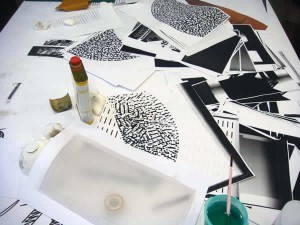Transfer printing

Is a system in which the ink is printed on a transfer paper, hence its name, which is then transferred to the garment using a heat press.
Usually there are two types of transfer systems: the transfer of printing and textile i classic or direct transfer. Our textile transfer systems allow us excellent results with four colors or six spot colors, offering spectacular results with vivid colors soft and smooth touch featuring a lasting even than screen printing.
There is also the water transfer printing or hydrographic, a dip transfer process used to apply images to trimensionales objects by immersion in water.
What is transfer?
As mentioned, there are two types of transfer stamping: textiles, screen printing and direct or classic.
Textile transfer
The Transfer of Screen Printing (Plastisol) Textiles is a lot like the Silk screen except that the ink does not print directly on fabric but on a special paper, which is then transferred to the garment by means of a thermal plate system.
Has the same color limitations that classical but with the advantage that the transfer can be saved for later use screen printing.
The use of Pantone colors quite accurately retains the original. The picture quality offered allows us to obtain a very realistic for both color as white garments, offering greater resistance in its finish.
You can use color process, spot colors for metal, fluorescent, etc.
Classic Transfer (paper)
Direct Transfer is a system that consists of transferring a printed sheet in a printer of high resolution color to a light or dark fabric through heat press, obtaining very visual results. It is very economical for small amounts.
Unlike vinyl printing and cutting, design forms in the transfer are not cut, but transferred as a sticker to the garment. Touch is somewhat softer than vinyl.
Although it is a technique with acceptable strength can not compare to the quality and durability of screen printing, vinyl or digital printing.
The great advantage of Plastisol Transfer about screen printing, for example, is that you need not know in advance the size and color of the garment on which it is to be transferred.
Is a delicate art that requires washing clothes in cold and upside down.
How is it performed?
In the transfer process is required a paper type called “transfer” for its properties of transfer ink to another material. The printing of this paper can be performed by screen printing method or directly from a printer, as screen printing or direct transfer (classic). Like in serigraphy, printing is performed in mirror (reversed) and inverting the ink layers. Therefore, the first visible color in the textile must be first printed on the transfer support.
Application by screen printing on paper offer great strength and durability on garments with a higher quality than the direct application on the papers.
Once printed papers transfers, each color is pre-dried (or pregelifica) according to the type of ink used. Below it is transferred to the garment by applying heat and pressure in industrial sheets, depending on the garment and apply varying heat and pressure method.
Finally support transfer of cool completely after the garment off.
This process is used to achieve excellent results in places where conventional printing is difficult to print and has the advantage over conventional screen printing graphics that can be transferred to a larger number of colors. It is applied to woven fabrics of cotton, polyester, nylon, leather …
Another important advantage is that the transfer paper can be reused as many times as needed and can be stored for later use.
Is printed by screen printing to a paper called “transfer” for its ink transfer properties to another material. Subsequently, the transfer printing is applied on the article by heat and pressure.
It is defined as the process of applying screen printing on paper that we use to transfer the design to the garments. They are transfers using a screen printing inks for maximum strength and quality and the same process, but rather than directly on the fabric, is printed on a siliconized paper. Once “cured” by the heat, it is transferred to an industrial fabric sheet by heat and pressure.
What is this applied for?
Although typically used for textiles, it can also be applied to other materials such as small or medium format mugs, umbrellas, alfrombrillas Mouse, bags, hats, fans, etc …
For application onto non-planar surfaces, the water transfer printing applied to metal, wood, most plastics, glass or any material that is not affected by water is used. Has an endless variety of end uses: helmets, dryers, vehicles, footwear, binoculars, weapons, tools, glasses and a long etc.
In its application on polyester textiles offers the best results to be very thermally stable and insensitive to moisture.
Need more information?
If you want to know more about how we make our processes of serigraphy and the spectacular results we offer, please contact us.
